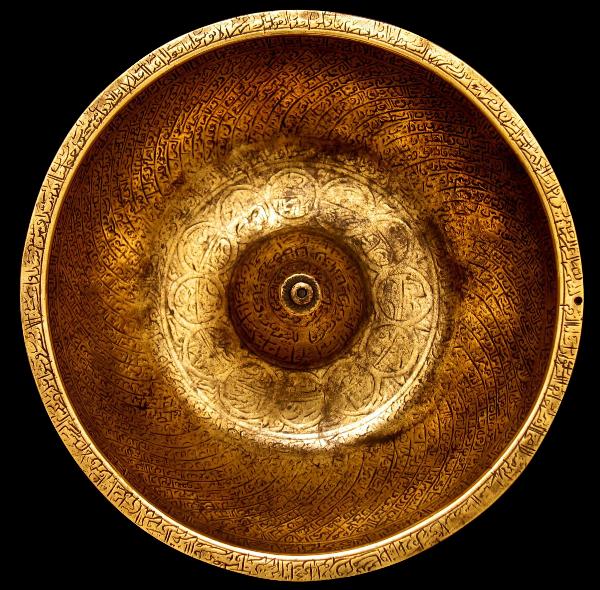
Antique Islamic Magic Bowl, Persia
Magic Medicinal Bowl
Persia (Iran)
early 19th century or earlier
diameter: 15.2 cm; height: 4.5 cm
This brass magic bowl is etched all over with bands of Koranic script including a wide band of nasta’liq script on the external sides. The centre of the bowl features a dome that probably had a hole to allow the bowl to be suspended from the middle by a chain. The hole and the central cavity have been filled from beneath at a later time, possible by a later owner.
The base is etched in Arabic with the name ‘Karbala’i Husaynquli’ (an owner of the bowl) and a date – AH 1262 (AD 1846) – which is the year that the bowl came into the owner’s possession. (Karbala’i Husaynquli is a Persian name.)
The bowl shows considerable wear from usage suggesting that it is significantly older than the ownership date of 1846.
Magic bowls were made at least as early as the 12th century. They were used in Islam in the treatments of disease and other ailments, including insect and snake bites. Water placed in such bowls was believed to take on curative aspects after having come into contact with the various talismanic and Koranic symbols and verses etched onto such bowls. It was then drunk by the afflicted person.
References
Savage-Smith, E., ‘Islamic magical texts vs. magical artefacts’, in Societas Magica Newsletter, Fall 2003.
Inventory no.: 71
SOLD


